Nvidia GeForce GTX 650 And 660 Review: Kepler At $110 And $230
We have two new graphics cards in the lab today: Nvidia's GeForce GTX 650 and 660, filling the gap between its GeForce GT 640 and GTX 660 Ti with Kepler derivatives. Are these GK107- and GK106-based boards able to challenge the Radeon HD 7750 and 7850?
GeForce GTX 660: OEM And Retail Cards With Different GPUs?
Two GPUs, Two Cards, One Model Name
Some of Nvidia's board partners are adding unnecessary confusion to the GeForce GTX 660 model name. Although the retail GeForce GTX 660 cards center exclusively on the GK106 GPU, Asus is manufacturing an OEM version with a cut-down GK104 graphics processor and two six-pin power connectors.
In order to deliberately handicap this card's performance (since it has more CUDA cores than a GK106), its GPU and memory frequencies are slowed down.
| Header Cell - Column 0 | GeForce GTX 660 Ti | GeForce GTX 660Retail | Asus GTX 660DirectCU II Top | GeForce GTX 660 OEM |
|---|---|---|---|---|
| Shader Cores | 1344 | 960 | 1152 | |
| Texture Units | 112 | 80 | 96 | |
| Color ROPs | 24 | 24 | ||
| Fabrication Process | 28 nm | 28 nm | ||
| Core/Boost Clock | 915/980 MHz | 980/1072 MHz | 1033/1137 MHz | 824/899 MHz |
| Memory Clock | 1502 MHz GDDR5 | 1502 MHz GDDR5 | 1527 MHz GDDR5 | 1400 MHz GDDR5 |
| Memory Bus | 192-bit | 192-bit | ||
| Memory Bandwidth | 144.2 GB/s | 144.2 GB/s | 146.6 GB/s | 134.4 GB/s |
| Graphics RAM | 2 GB GDDR5 | 2 GB GDDR5 | ||
| Power Connectors | 2 x 6-pin | 1 x 6-pin | 2 x 6-pin | |
| Maximum Thermal Design Power | 150 W | 140 W | ~145 W | 140 W |
Asus' GeForce GTX 660 OEM With GK104
An OEM graphics card shouldn't be available in the retail channel, but rather only to system builders. Thus, the cooling system is cheaper and the effort that goes into nice acoustics is a lot less focused. Moreover, Asus uses the shorter reference GeForce GTX 670 PCB, equipping it with two six-pin power connectors and a six-phase voltage regulator.
The GK104 GPU on this OEM board sports 1152 CUDA cores operating at an 824 MHz base frequency, averaging a GPU Boost rate of 899 MHz. Moreover, the card's 2 GB of GDDR5 runs at 1400 MHz, which is less than the retail offering.
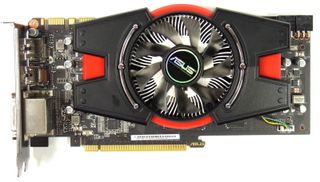

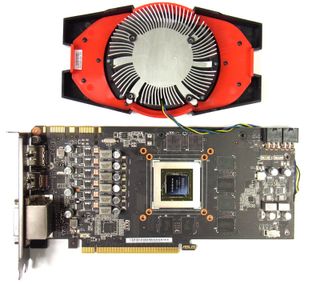
Asus GeForce GTX 660 DirectCU II Top
Stay on the Cutting Edge
Join the experts who read Tom's Hardware for the inside track on enthusiast PC tech news — and have for over 25 years. We'll send breaking news and in-depth reviews of CPUs, GPUs, AI, maker hardware and more straight to your inbox.
The factory-overclocked retail model utilizes Nvidia's 960-core GK106 GPU set to a 1033 MHz base frequency. Its average GPU Boost speed is 1137 MHz, rather than 1072.
However, Asus puts a lot more effort into its cooling, even if this card's single six-pin power connector suggests less overclocking headroom. Another digital six-phase voltage regulator matches the OEM board's circuitry.
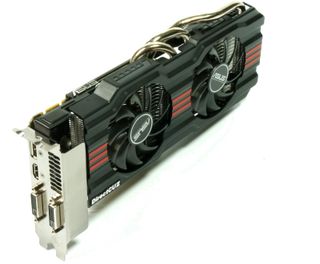
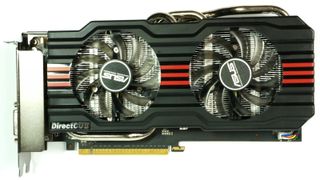
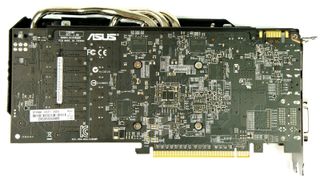
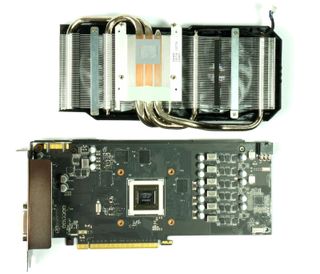
The following memory bandwidth tests and GPGPU benchmarks were run using the retail GeForce GTX 660 with Nvidia's GK106 GPU and reference clock rates. We aren't using the factory-overclocked card from Asus for any of our tests.
Current page: GeForce GTX 660: OEM And Retail Cards With Different GPUs?
Prev Page Overclocking GeForce GTX 660 Next Page Memory Bandwidth: Testing The LimitsMost Popular

